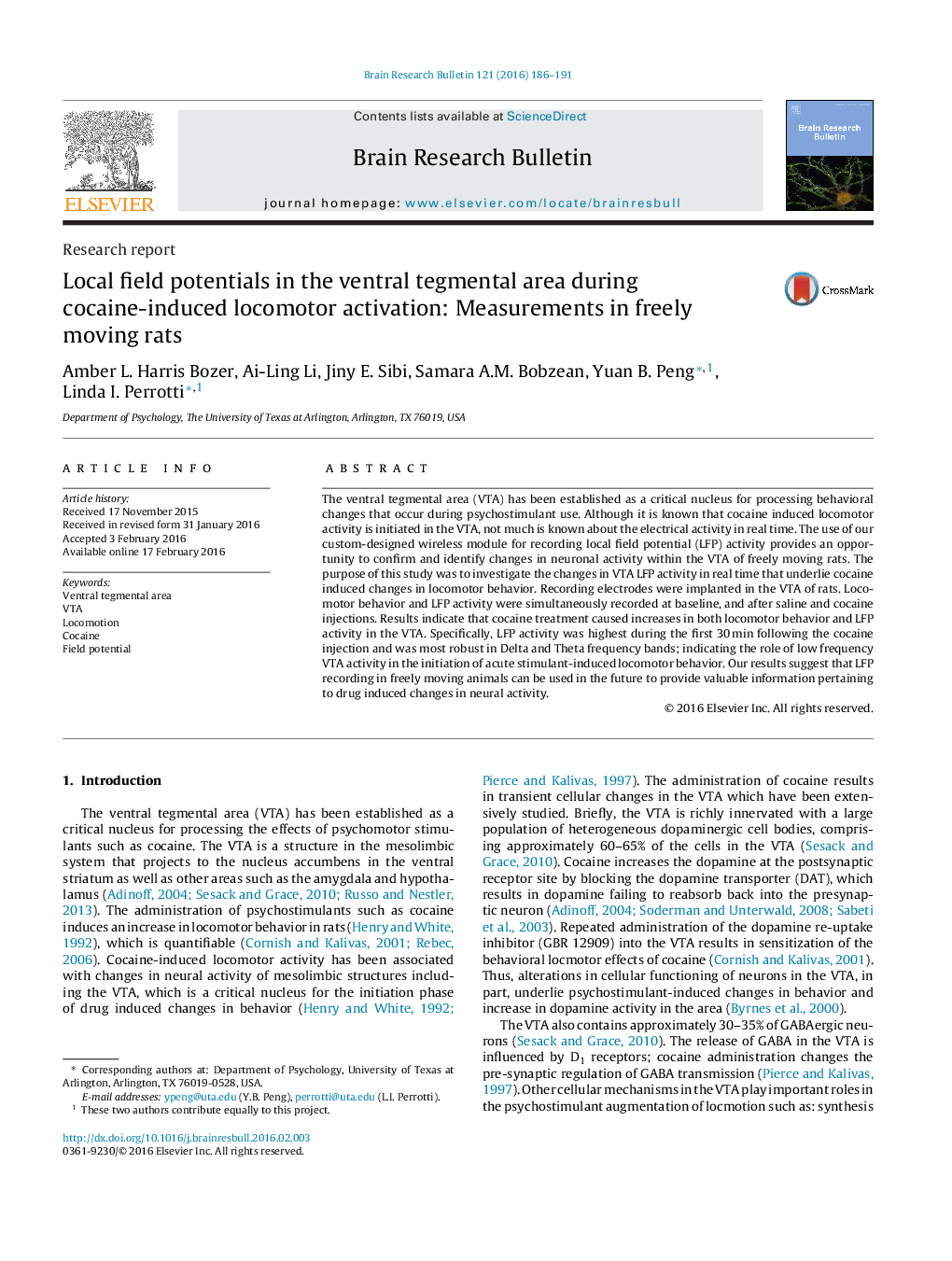| Article ID | Journal | Published Year | Pages | File Type |
|---|---|---|---|---|
| 4318653 | Brain Research Bulletin | 2016 | 6 Pages |
•We recorded local field potential (LFP) activity in the ventral tegmental area (VTA).•Cocaine increased local field potentials in the VTA as well as locomotor behavior.•VTA changes during locomotion were highest in the delta and theta bands.•VTA changes were highest directly after cocaine injection.•Initiation of stimulant induced locomotion can be studied using LFP recording.
The ventral tegmental area (VTA) has been established as a critical nucleus for processing behavioral changes that occur during psychostimulant use. Although it is known that cocaine induced locomotor activity is initiated in the VTA, not much is known about the electrical activity in real time. The use of our custom-designed wireless module for recording local field potential (LFP) activity provides an opportunity to confirm and identify changes in neuronal activity within the VTA of freely moving rats. The purpose of this study was to investigate the changes in VTA LFP activity in real time that underlie cocaine induced changes in locomotor behavior. Recording electrodes were implanted in the VTA of rats. Locomotor behavior and LFP activity were simultaneously recorded at baseline, and after saline and cocaine injections. Results indicate that cocaine treatment caused increases in both locomotor behavior and LFP activity in the VTA. Specifically, LFP activity was highest during the first 30 min following the cocaine injection and was most robust in Delta and Theta frequency bands; indicating the role of low frequency VTA activity in the initiation of acute stimulant-induced locomotor behavior. Our results suggest that LFP recording in freely moving animals can be used in the future to provide valuable information pertaining to drug induced changes in neural activity.
